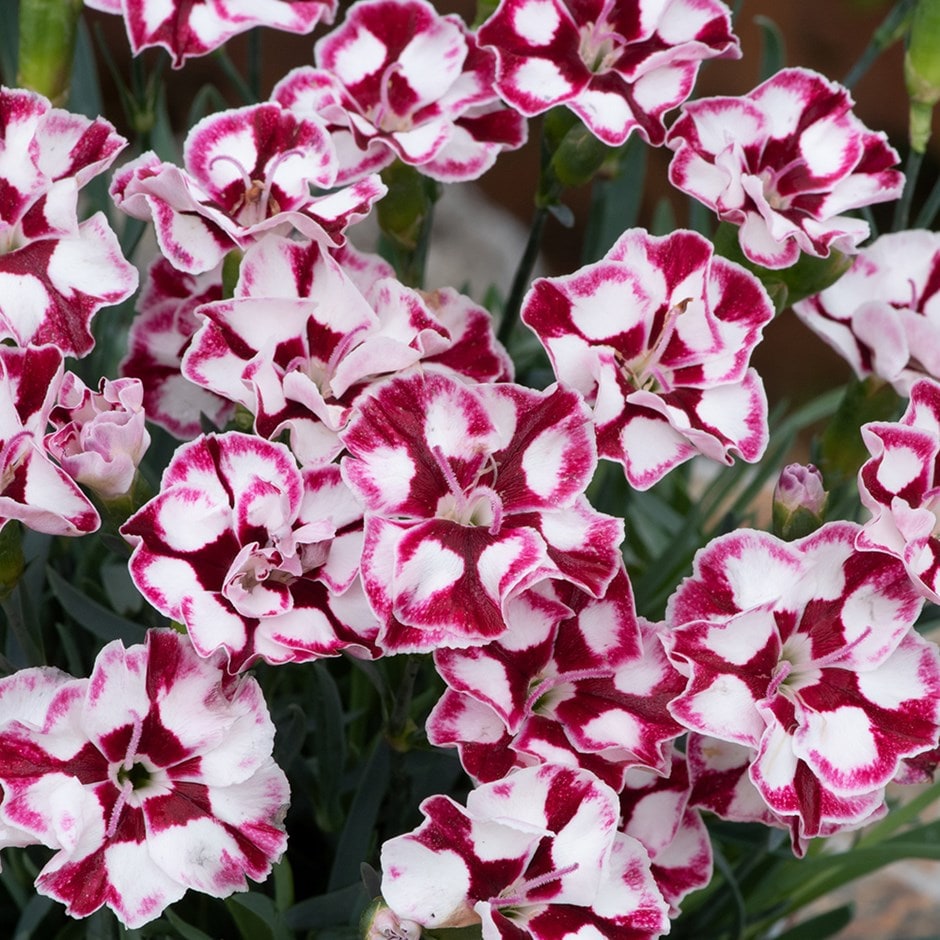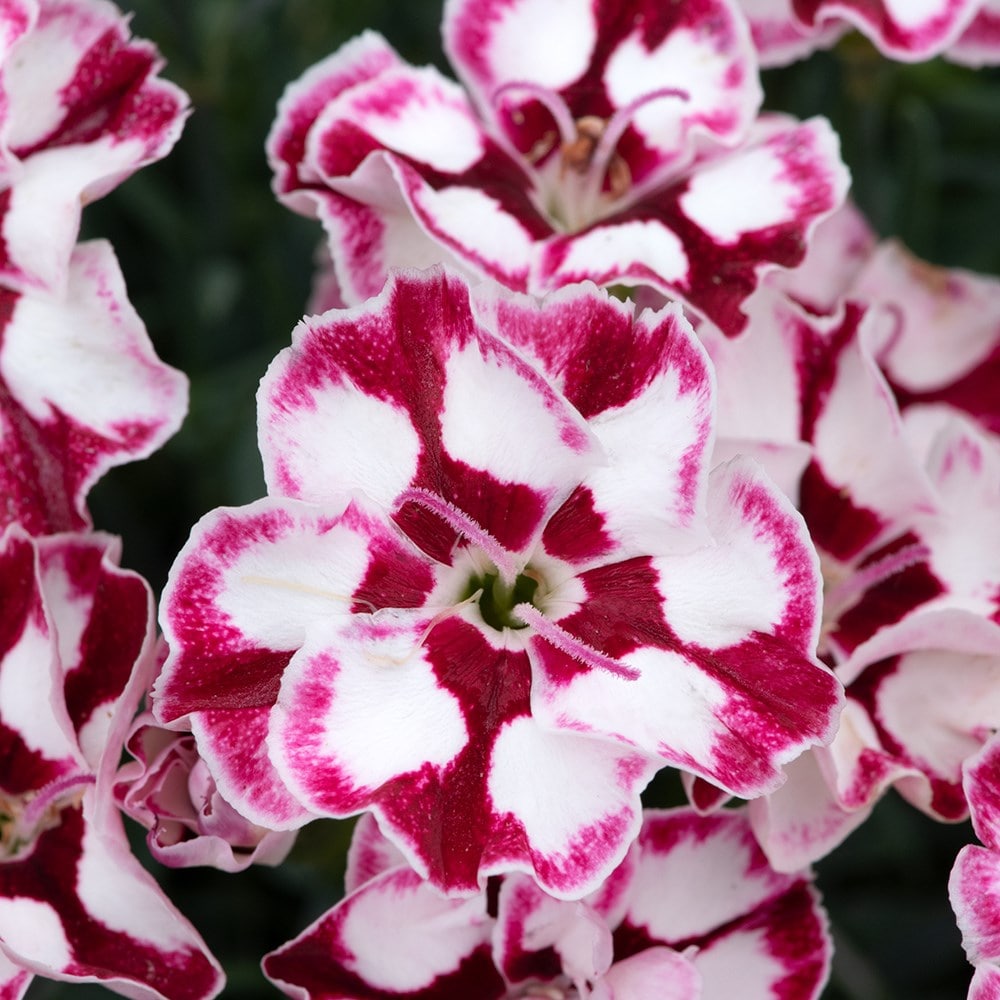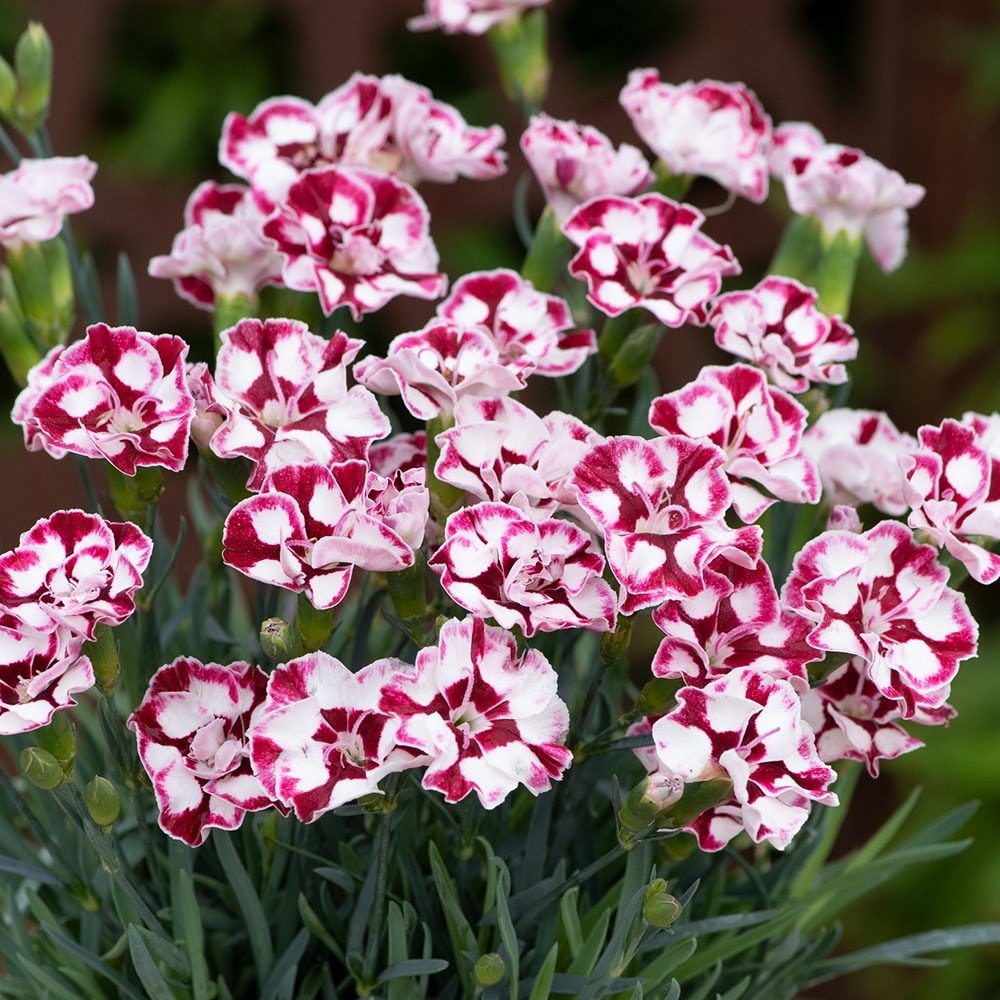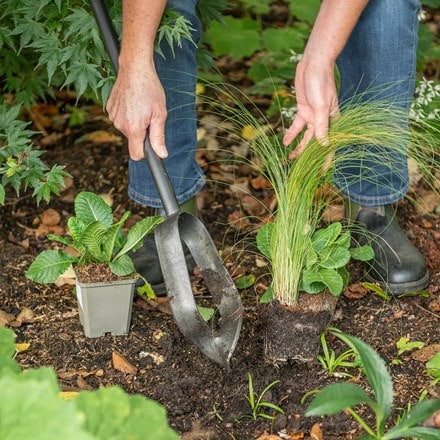Dianthus (Allwoodii Group) 'Diantica Cremarena'
pot pink
- 9cm pot
- £6.99
- available to order from late autumn
- 2 + 1 FREE 9cm pots
- £13.98 £4.66 each
- available to order from late autumn
Delivery options
- Standard £5.99
- Position: full sun
- Soil: moderately fertile, moist but well-drained soil or general-purpose compost for containers
- Rate of growth: average
- Flowering period: May to August
- Hardiness: fully hardy
A scented ‘pink’ that loves to show off! The flowers are mostly semi-double in nature, prolific (if deadheaded), and convoluted with vibrant raspberry ripple markings. Dianthus ’Cremarena’ carries a light fragrance, and the mild winter persistent grey-green foliage is noteworthy as it contrasts well with so many other green plants.
A beautiful plant for the front of borders, rock gardens and patio pots, the name Dianthus comes from the Greek words dios meaning divine and anthos meaning flower.
A beautiful plant for the front of borders, rock gardens and patio pots, the name Dianthus comes from the Greek words dios meaning divine and anthos meaning flower.
Dianthus thrives in well-drained, alkaline soil enriched with well-rotted manure or garden compost. When planting, choose a sunny location with good air circulation. Space plants 30cm (12in) apart to allow for growth. Water deeply but infrequently (rather than little and often) to encourage deep root development, especially during dry spells.
In spring, apply a balanced granular fertiliser to promote healthy growth and abundant blooming. Mulch around the plants to retain moisture and suppress weeds, but keep the mulch away from the plant's crown to prevent rot. In areas with harsh winters, provide a light mulch for protection.
Deadhead regularly to extend the blooming period and maintain a tidy appearance. After the main flowering period, trim back lightly to promote new growth at the base of the plant.
In spring, as new shoots emerge, prune more closely to maintain a compact, tidy shape. This pruning regime helps rejuvenate the plant and encourages fuller, more vigorous growth.
In spring, apply a balanced granular fertiliser to promote healthy growth and abundant blooming. Mulch around the plants to retain moisture and suppress weeds, but keep the mulch away from the plant's crown to prevent rot. In areas with harsh winters, provide a light mulch for protection.
Deadhead regularly to extend the blooming period and maintain a tidy appearance. After the main flowering period, trim back lightly to promote new growth at the base of the plant.
In spring, as new shoots emerge, prune more closely to maintain a compact, tidy shape. This pruning regime helps rejuvenate the plant and encourages fuller, more vigorous growth.
- Humans/Pets: Skin allergen



